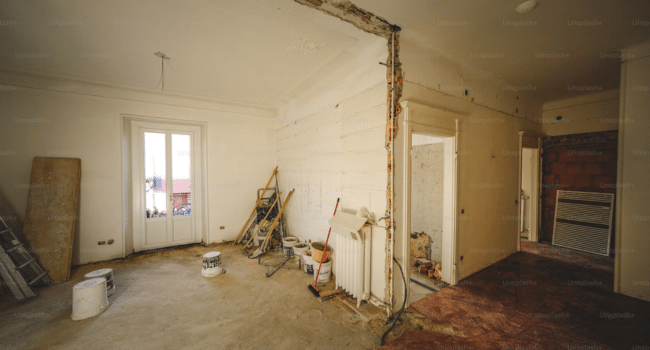Emergencies in the home are every homeowner’s worst nightmare. Two of the most common disasters, water and fire damage, can strike suddenly, leaving devastation in their wake. Water and Fire Restoration Marysville, WA efforts are crucial to returning to a sense of normalcy, but response to these emergencies demands a level of expertise that many may not possess. To illuminate the complexities and the professional strategies involved in restoration, we delve into the methods and best practices that can help rebuild from such significant losses.
Understanding Water Damage and Its Implications
Water damage can come from a variety of sources, including heavy rainfall, burst pipes, or even a simple, unnoticed leak. Immediate action is critical when dealing with water damage, as the effects can be swift and long-lasting. The ingress of water not only weakens the structure of the building but can also lead to mold growth if not properly addressed.
Immediate Steps After Water Damage
Within the first 24 to 48 hours after the water intrusion, the restoration process should begin with these critical steps:
Assessment: A thorough inspection of the affected areas is crucial in understanding the extent of the damage.
Water Extraction: Removing the water as quickly as possible helps mitigate the damage and reduces the likelihood of mold growth.
Drying and Dehumidification: High-speed air movers and dehumidifiers are employed to accelerate the drying process in a controlled manner.
Advanced Techniques for Water Restoration
Restoration professionals utilize specialized equipment and techniques to handle water damage:
Moisture Detection: Tools such as moisture meters and infrared cameras help detect water that may be hidden from plain sight.
Content Restoration: Water-damaged belongings can often be restored using specialized techniques, including freeze-drying for documents and electronics restoration.
Mold Remediation: If mold is present or likely to emerge, professionals follow specific remediation protocols to ensure thorough cleaning and prevention of further growth.
Addressing the Aftermath of Fire and Smoke
Fire damage can be one of the most traumatic experiences one can face. The destruction from the flames, the residue from smoke, and the use of water to extinguish the fire can cause extensive harm to a structure and its contents.
Immediate Steps After a Fire
In the aftermath of a fire, time is of the essence when it comes to restoration:
Emergency Pre-cleaning: Immediate actions such as ventilating the structure and treating high-traffic areas can prevent further damage.
Assessment and Inventory: A comprehensive assessment of the damage is conducted, and an inventory is created to document all items affected.
Secure the Property: If the structural integrity is compromised, professionals will secure the property to prevent unauthorized access and further damage.
Specialized Techniques for Fire Restoration
Professionals dealing with fire and smoke damage employ a range of techniques to restore your property:
Smoke and Soot Removal: Using specialized equipment, technicians can remove smoke and soot from surfaces and contents, including delicate items such as artwork and textiles.
Content Cleaning: Depending on the severity of the damage, contents may be cleaned on-site or moved to a secure facility for restoration.
Odor Removal: Unpleasant odors can linger long after a fire, but with the use of ozone treatment or thermal fogging, professionals can effectively neutralize them.
The Role of Professionals in Restoration
The restoration process of a water or fire event is complex and multi-faceted. It involves more than just cleaning up after the disaster; it requires a blend of technical expertise, compassion, and efficiency to restore normalcy.
Expert Strategies for Restoration Companies
Leading restoration companies embrace advanced strategies to deliver results efficiently:
Rapid Response: Round-the-clock availability is key to minimizing damage. Quick action can significantly lessen the impact of the event.
Project Management: A dedicated project manager oversees every aspect of the restoration, from coordination of services to communicating with the client’s insurance company.
Cutting-Edge Technology: The use of advanced equipment and methodologies ensures a faster and more effective restoration, often surpassing the client’s expectations.
Empowering Homeowners for Post-Restoration
As a homeowner, proactive steps can be taken to prepare for or respond to damage before professionals arrive.
Homeowner Tips to Mitigate Water Damage
Regular Home Inspections: Routinely check for leaks under sinks, around tubs and showers, and near appliances that use water.
Know the Location of Shut-Off Valves: Be aware of where to quickly deactivate your home’s main water supply in the case of an emergency.
Immediate Response to Small Leaks: Small leaks should be addressed immediately to prevent the issue from escalating.
Homeowner Tips for Fire Safety
Install and Maintain Smoke Alarms: Properly installed and maintained smoke alarms can save lives and property.
Regular Inspections of Heating Sources: Have professionals inspect and maintain your heating sources regularly.
Emergency Evacuation Plan: Create and practice an evacuation plan with your family should a fire occur.
Conclusion: The Journey to Restoration
The journey to restoration is as unique as the individuals affected by water or fire damage. While the process is complex, understanding the steps involved and the professional expertise available can bring peace of mind in difficult times. By taking a proactive approach, homeowners can reduce their risks and better prepare for an emergency. Finally, the role of advanced tools and technologies cannot be understated in the swift and thorough recovery of a home. As you engage with restoration professionals, remember that balance can be restored, and with it, the potential for new beginnings.
Read more on KulFiy
A1 Water Damage Restoration – One Call Away to Restore Fire/Water/Mold Damage Denver
